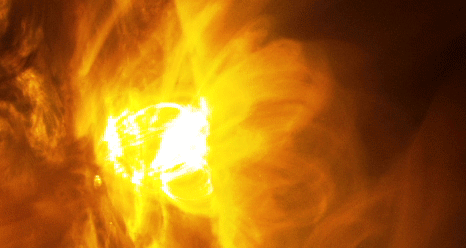NASA Planning New Missions Against Space Weather That Endanger Astronauts

NASA has selected two proposals that could be used as future missions to study dangerous space weather that can threaten astronauts. The proposals involve deploying satellites in space to monitor solar eruptions from the Sun.
Coronal mass ejections or particle explosions from the Sun’s surface are considered dangerous especially for astronauts in space. Aside from disrupting satellite communications and a spacecraft’s electrical functions, these ejections also expose astronauts to high levels of radiation.
In order to gain a deeper understanding of these solar ejections, NASA has selected two proposals that demonstrate how satellites can be used to protect astronauts against dangerous space weather, the space agency reported.
The first proposal is called Science-Enabling Technologies for Heliophysics (SETH). This satellite has the capability of detecting various wave types and particles emitted by the Sun such as energetic neutral atoms. These particles do not have an electrical charge but carry radiation.
The SETH satellite is also equipped with laser or optical communications, which are significantly faster than the traditional radio links between Earth and spacecraft.
The second proposal is dubbed as Solar Cruiser. This mission involves deploying a solar sail that’s about 18,000 square feet, which would demonstrate how radiation from the Sun can be used as a means of propulsion in space.
In addition, the Solar Cruiser satellite also has a chronograph that’s capable of measuring the velocity of particle explosions as well as the magnetic field structure of the Sun.
For NASA, these proposed missions will serve as the primary stepping stones in developing better technology aimed at understanding and accurately predicting space weather. The agency believes having this kind of technology is crucial in keeping astronauts and Earth safe from coronal mass ejections.
“This is the first time that our heliophysics program has funded this kind of technology demonstration,” Peg Luce, the deputy director of NASA’s Heliophysics Division said in a statement. “Providing the opportunity to mature and test technologies in deep space is a crucial step towards incorporating new techniques into future missions."
The SETH and Solar Cruiser satellites will be included as payloads in NASA’s Interstellar Mapping and Acceleration Probe mission, which is expected to launch in October 2024.
© Copyright IBTimes 2024. All rights reserved.





















